
Bolshoy Konyushenny Bridge is one of the bridges in the historical center of St. Petersburg.
The architectural appearance of the bridge has remained almost unchanged since the beginning of the 19th century.
The Bolshoy Konyushenny Bridge spans the Moika River in the alignment of Konyushenny and Moshkov lanes, and connects the Kazan and 1st Admiralty Islands.
The name "Stable" bridge got from the building of the Main imperial stables, located on the left bank of the Moika River, house No. 4.
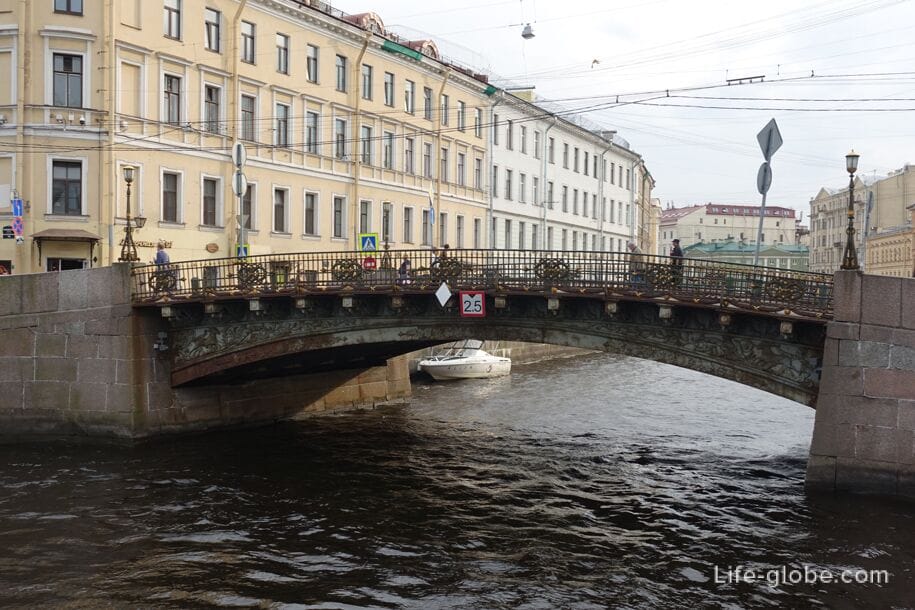
The Bolshoy Konyushenny Bridge has a total length of 28.4 meters and a width of 11.6 meters.
The bridge is a single-span arched metal structure with a hinged vault.
The facades of the bridge superstructure are covered with cast iron sheets with an ornament of artistic casting.
The coastal abutments of the bridge are made of rubble masonry on a pile foundation and lined with granite.
Railings are cast-iron grilles made in the form of frequently placed darts with curly overhead fittings. The details of the bridge's decor are "gilded". A granite parapet is installed on the abutments.
At the entrances to the bridge, on both sides, cast-iron floor lamps with lanterns are installed on granite parapets.
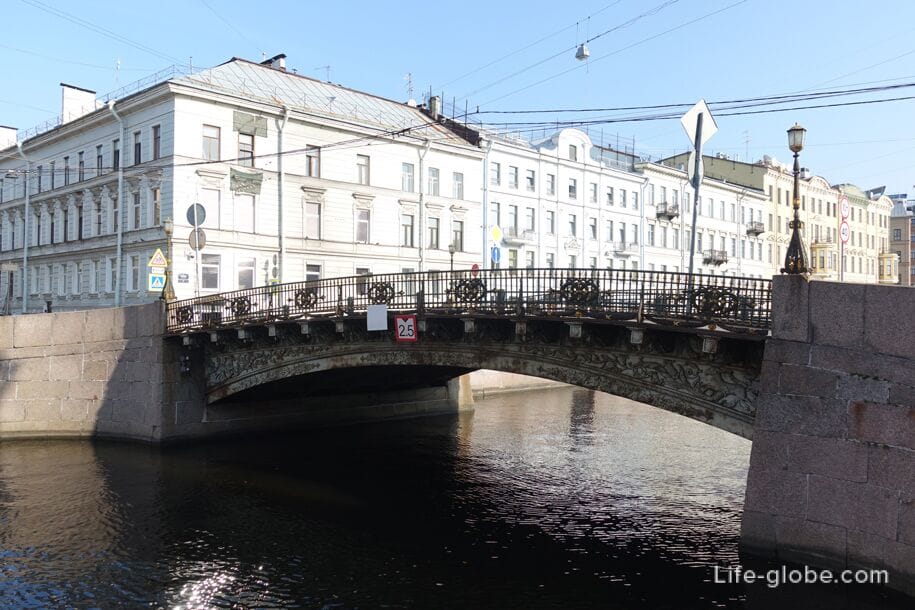
The Bolshoy Konyushenny Bridge is a roadway and pedestrian.
Pedestrian sidewalks are located on both sides of the bridge.
The pavement on the bridge is asphalt concrete. The roadway is separated from the sidewalk by a granite curb, and is fenced off by a simple metal fence.
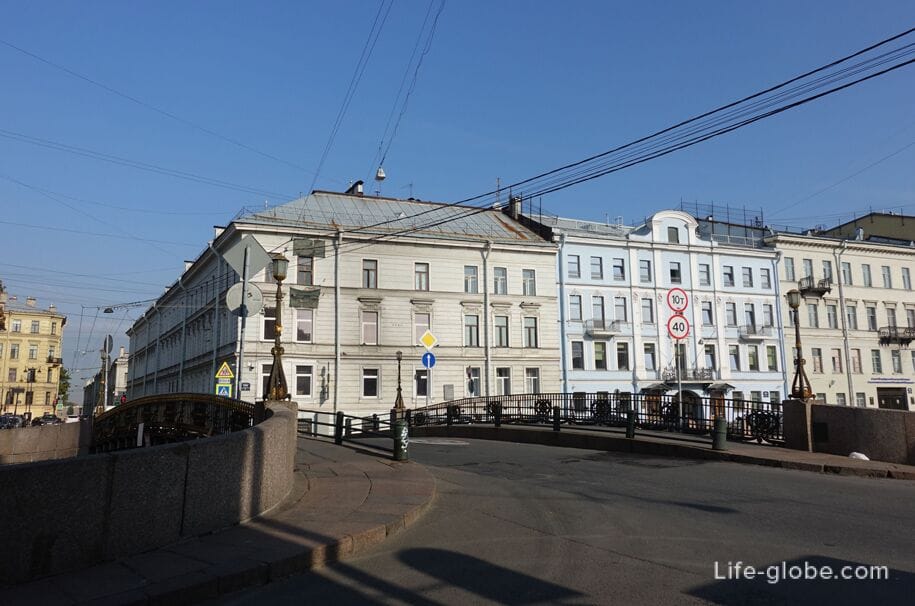
The Bolshoy Konyushenny Bridge offers panoramic views of the Moika River and the river embankments, along which historical buildings rise in dense rows, including the former mansion of the Princes Volkonsky, which now houses the Pushkin Museum-apartment.
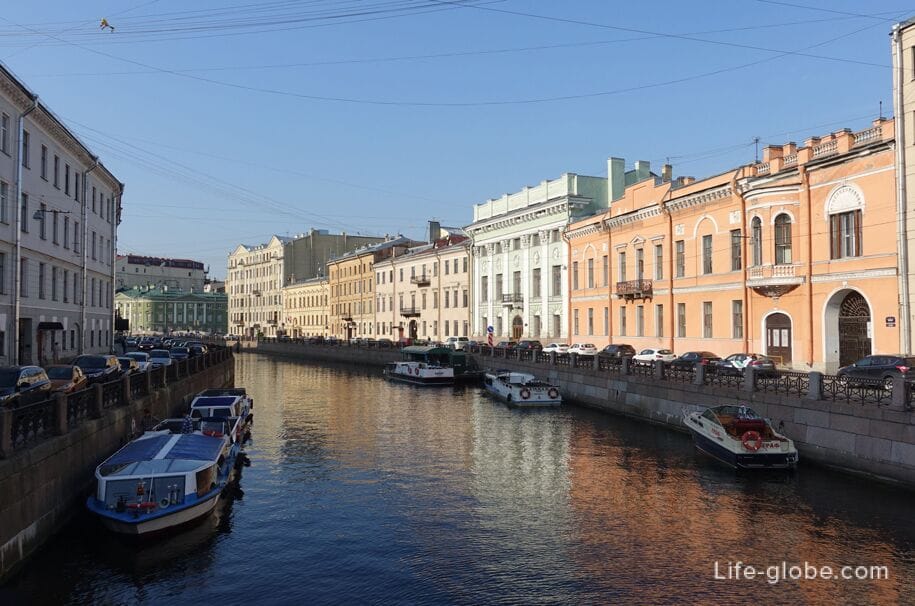
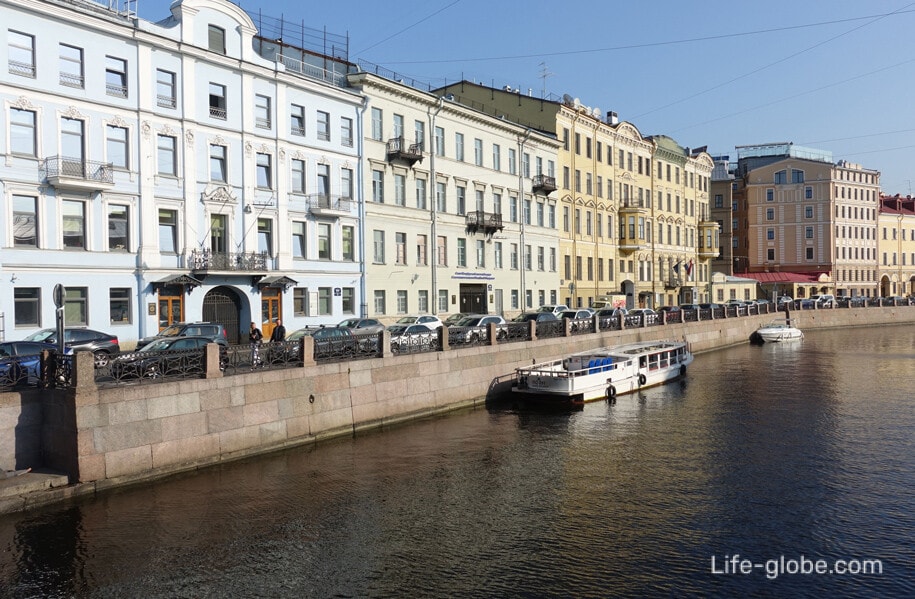
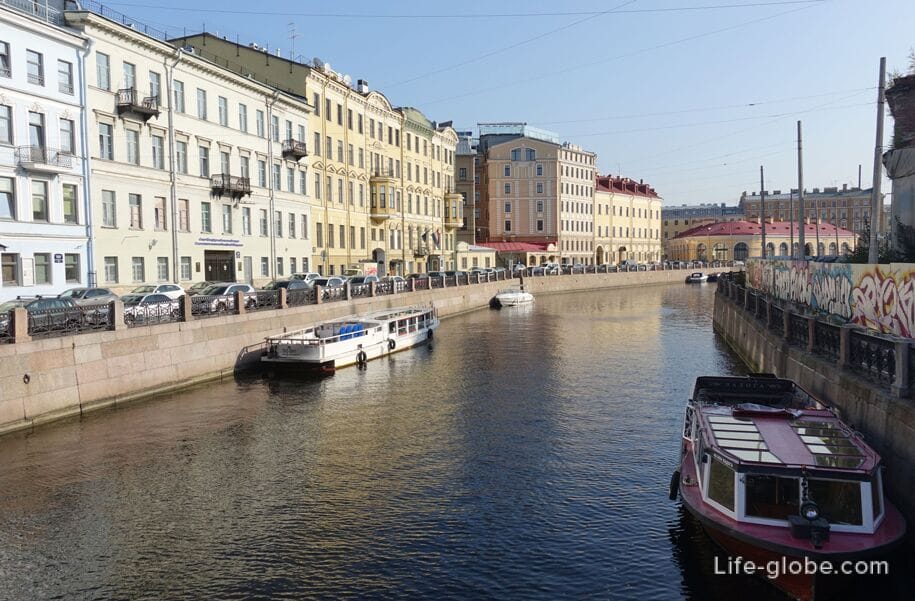
The first bridge at this place was recorded on the plan of St. Petersburg in 1737.
Initially, the bridge was known as the "Greek", because in the 18th century there was a Greek settlement on the right bank of the Moika River. Then the bridge changed its name several times: "the bridge at Moshkov Lane", "Konyushenny Bridge" and "The Second Konyushenny Bridge", until, in the 19th century, its modern name - "Bolshoy Konyushenny" was fixed behind the bridge.
In 1753, the bridge was rebuilt according to the project of the Dutch master Herman van Boles. Then it was a wooden girder bridge, sheathed with boards painted to look like stone, with wooden railings.
In 1828, a cast-iron bridge was erected on the site of a wooden bridge. The construction of the bridge was carried out according to the project of engineers E.A. Adam and V.K. Tretter on the basis of standard drawings by engineer V.I. Geste, but with some improvements. So, at the suggestion of engineer P.P. Bazin, elliptical holes were made in the ceiling and walls of the bridge tubes, which made it possible to facilitate the construction and save metal. This innovative solution was also applied in the project of the Big Stable Bridge. Architect K.I. Rossi took part in the design of the bridge.
In 1935, the bridge was reinforced with a reinforced concrete arch due to deformations of the supports and superstructures. The reconstruction, carried out according to the project of engineers M.I. Zhdanov and A.D. Saperstein with the advice of Professor G.P. Perederia, made it possible to unload the cast-iron arch of the bridge and thereby preserve the bridge as a monument of architecture and engineering of the 19th century.
In 1951, according to the project of architect A.L. Rotach, restoration work was carried out on the architectural details of the bridge, floor lamps and lanterns.
Subsequently, major repairs and reconstructions of the bridge were also carried out, but with the preservation of its architectural appearance of the 19th century.
Upstream of the Moika River from the Bolshoy Konyushenny Bridge is the Malo-Konyushenny Bridge, which is part of the unique Three-bridge of St. Petersburg, and below - wide Singing Bridge leading to Palace Square with the Winter Palace (now The Hermitage).
Coordinates of the Big Stable Bridge: 59°56'31.0"N 30°19'22.0"E (59.941944, 30.322778).
Nearest metro stations: "Admiralteyskaya", "Nevsky Prospekt" and "Gostiny Dvor".
All accommodation facilities in St. Petersburg, including in the city center and more remotely from it, can be viewed and booked here